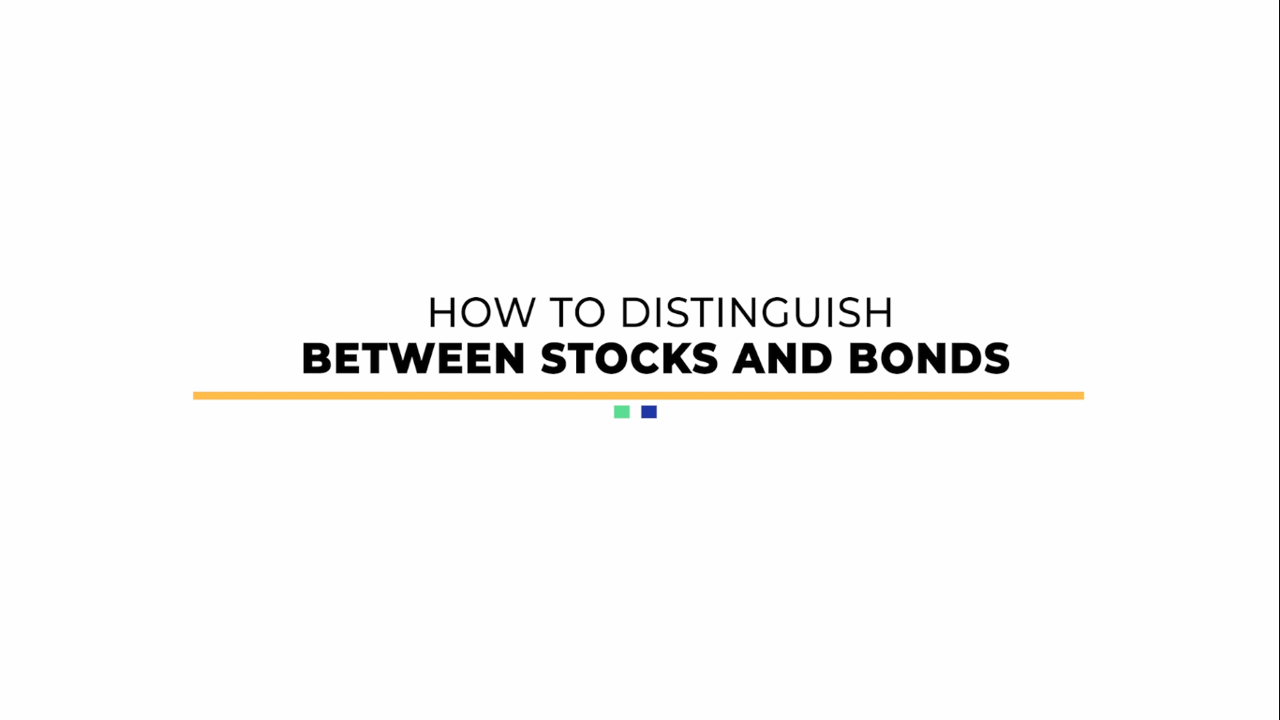How to distinguish between Stocks and Bonds?

In the financial world, an investment is a monetary asset purchased with the idea that it will provide income in the future or will be sold at a higher price for a profit. Two of the most popular types of investment are stocks and bonds. What do we really mean by stocks and bonds and how can they be distinguished?
-
STOCKS
When a company is first founded, its only shareholders are the co-founders and early investors. As the company grows and needs more capital to expand, it may issue more of its shares to other investors, so that the original founders may end up with a substantially lower percentage of shares than they started off with. With further growth, early investors may become eager to sell their original shares and monetize the profits of their early investments.
When people talk about stocks, they are usually referring to common stock, representing a claim on profits (i.e. dividends) and conferring voting rights. In fact, the great majority of stock is issued in this form. Whilst investors gain the power to vote and elect board members who oversee the major decisions made by management, they also place themselves at risk as the probability of losing the entire amount invested in a company goes out of business, is relatively high. This may happen since once a company goes bankrupt and liquidates, the common shareholders will not receive money until the creditors, bondholders and preferred shareholders are first paid.
In addition to common stock, however, there also exists another class of corporate shares that confers special rights that are not available to common shareholders. This class refers to preferred stock, which can essentially be regarded as a premium or priority share that a company issues to senior investors. One of the most noteworthy rights that preferred shareholders enjoy is the right to receive dividends before common stock shareholders. This means that the preferred shareholders will be paid first and any dividends left over will then go to the common shareholders.
-
BONDS
In contrast to stocks, which are essentially company shares, bonds represent debt obligations and therefore are a form of borrowing. If a company issues a bond, the money it receives in return is a loan, and must be repaid over time. Just like the mortgage on a home or a credit card payment, Governments and corporations commonly use bonds in order to borrow money. Similarly, corporations will often borrow to grow their business, to buy property and equipment, to undertake profitable projects, to conduct research and development or to hire employees.
You might ask why does a company resort to issuing bonds over seeking the traditional bank business loan? The answer lies in the fact that large companies often need far more money than the average bank can provide. As a result, bonds provide a good solution, allowing multiple individual investors to assume the role of lender.
It is equally important to distinguish between the different types of bonds:
- Government Bonds: A government bond or “‘sovereign bond”‘ is a bond issued by a national government, generally with a promise to pay periodic interest payments and to repay the face value on the maturity date. Government bonds are usually denominated in the country’s own currency, in which case the government cannot be forced to default, although it may choose to do so. If a government is close to default on its debt the media often refer to this as a sovereign debt crisis. The terms on which a government can sell bonds depend on how creditworthy the market considers it to be. International credit rating agencies will provide ratings for the bonds, but market participants will make up their own minds about this.
- Corporate Bonds: A corporate bond is a bond issued by a corporation in order to raise financing for a variety of reasons such as to ongoing operations or to expand business. The term is usually applied to longer-term debt instruments, with maturity of at least one year. Corporate debt instruments with maturity shorter than one year are referred to as commercial paper.
- Convertible Bonds: In finance, a convertible bond is a type of bond that the holder can convert into a specified number of shares of common stock in the issuing company or cash of equal value. The rate at which investors can convert bonds into stocks, that is, the number of shares an investor gets for each bond, is determined by a metric called the conversion rate. The conversion rate may be fixed or change over time depending on the terms of the offering.
- Callable Bonds: A callable bond is a bond that can be redeemed by the issuer prior to its maturity. If interest rates have declined since the company first issued the bond, the company is likely to want to refinance this debt at a lower rate of interest. In this case, the company calls its current bonds and reissues them at a lower rate of interest.
- Asset-backed Securities: One more category of bonds is issued by banks or other financial sector participants and are referred to as asset-backed securities. These bonds are created by packaging up the cash flows generated by a number of similar assets and offering them to investors. If such a bond is backed by a number of mortgages, they are known as mortgage-backed securities or MBS. These bonds are typically reserved for sophisticated or institutional investors and not individuals.

